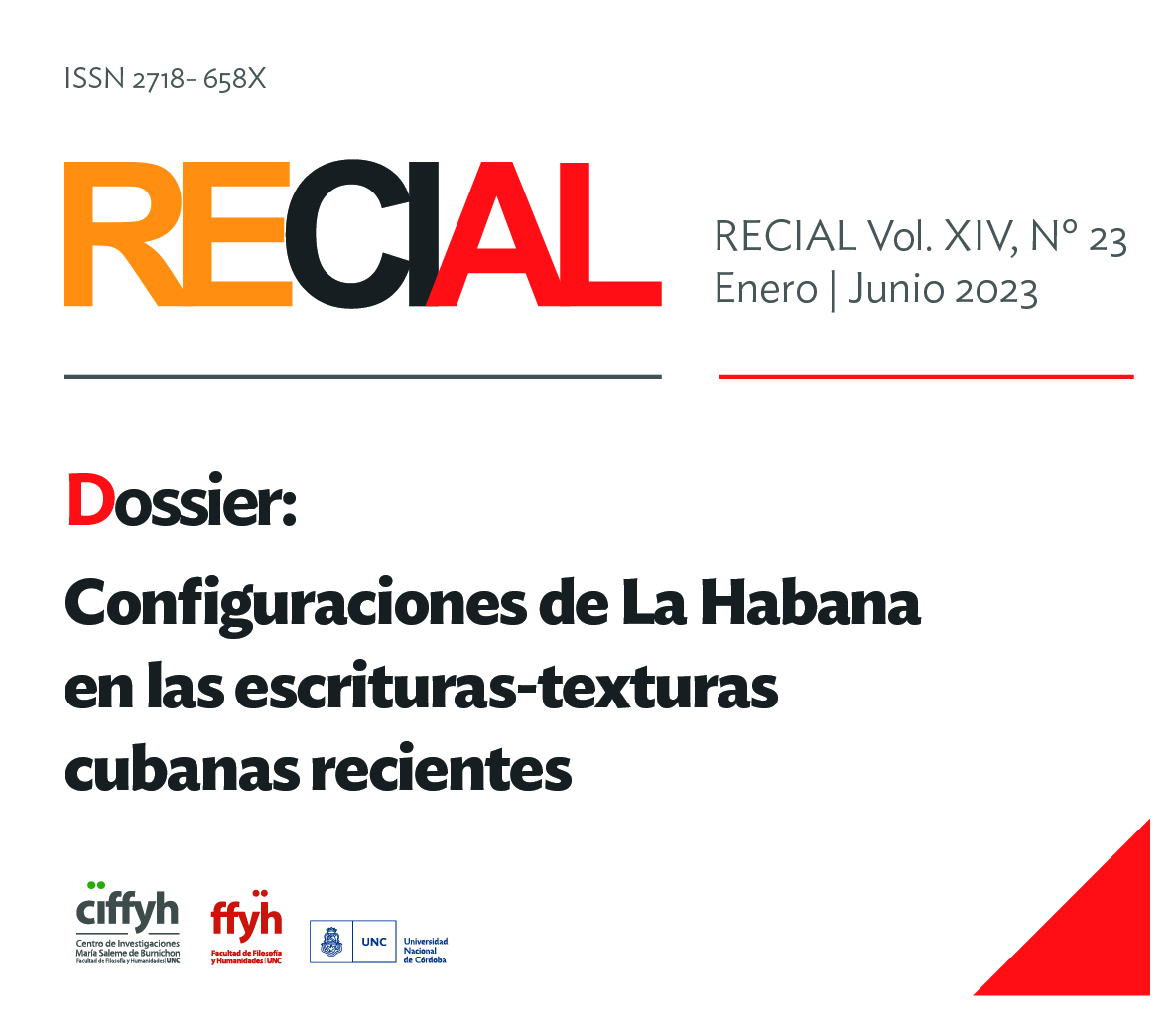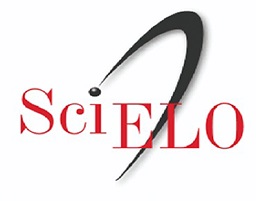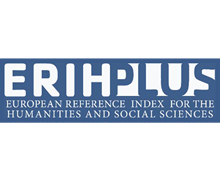Imaginary Connections of the Elusive Havana (1968-2017)
DOI:
https://doi.org/10.53971/2718.658x.v14.n23.41371Keywords:
Havana, elusive city, María Zambrano, Alejo Carpentier, Dulce María Loynaz, Guillermo Cabrera Infante, Anna VeltfortAbstract
The purpose of this article is to analyze the concept of an elusive Havana in the cultural imaginary of the second half of the 20th century by focusing on essays, documentaries, books, and other cultural productions associated with María Zambrano, Alejo Carpentier, Dulce María Loynaz, Guillermo Cabrera Infante, and Anna Veltfort. The questions animating this work are: Why does Havana become elusive for writers with differing levels of proximity to the city? How do they articulate the traces of that elusive Havana? My essay proposes that beyond the conception of an open, permissive, hospitable city, the epitome of the tourist space and even a sanctuary for people from different parts of the world, another city coexists, not only understood as a disdainful, rough, and sullen space, but also as a space that seeks to avoid itself, that withdraws, excuses itself and becomes elusive or violent. Like the representation of the city in the landscapes of the painter René Portocarrero, in the elusive Havana, the confusion is given by motley and overlapping meanings, colors, and textures. The plethora of experiences and sensations reaches levels of supersaturation that end up as mirages: The city simulates a complete transparency, but it is precisely in that excess wherein lies the disguise.
Downloads
References
Anejos y notas. En M. Zambrano, Obras Completas (Vol. VI; pp. 1115-1548). Barcelona: Galaxia Gutenberg.
Arcos, J.L. (2007). María Zambrano, la Cuba secreta y la Isla Verde. Cronología: 1936-1959. En M. Zambrano, Islas (pp. XLIV-LXIX). Madrid: Verbum.
Birkenmaier, A., Whitfield, E. K. (2011). Havana beyond the Ruins: Cultural Mappings after 1989 [La Habana más allá de las ruinas: mapas culturales después de 1989]. Durham [NC]: Duke University Press.
Boková, J. (Dir.). (1990). Havana. United Kingdom: BBC.
Boym, S. (2001). The Future of Nostalgia. [El futuro de la nostalgia]. New York: Basic Books.
Cabrera Infante, G. (1999). El libro de las ciudades. Madrid: Alfaguara.
Carpentier, A. (2018). Recuento de moradas. Ciudad de México: Lectorum.
Casal, L. (1976). Para Ana Veltfort. Areíto, 3 (1), 52.
Coyula, M. (2014) ¿Cómo será La Habana? Revista Bimestre Cubana, III (40), 22-33.
“Cuba, tierra de asilo”. (1º de junio de 2016). Convocatoria de ponencias. Calenda. Recuperado de https://calenda.org/368476
Didion, J. (1987/1998). Miami. New York: Vintage.
Ferrer, C. (4 de agosto de 2009). Jana Boková, la documentalista checa enamorada de Latinoamérica. Radio Prague International. Recuperado de https://espanol.radio.cz/jana-bokova-la-documentalista-checa-enamorada-de-latinoamerica-8582280
Gentic, T. (2016). Affect, Time, and Movement in María Zambrano’s “Delirio y destino”. [Afecto, tiempo y movimiento en Delirio y destino de María Zambrano]. Anales de la literatura española contemporánea, 1 (41), 45-73.
González, J. E. (2019) The Spatial Turn and Twenty-First Century Latin American Fiction. [El Giro Espacial y la ficción latinoamericana del siglo XXI]. En González, J., Robbins, T. (Eds.), Urban Spaces in Contemporary Latin American Literature. (pp. 1-17). New York: Palgrave Macmillan.
González Echevarría, R. (2004a). Alejo Carpentier: el peregrino en su patria. Madrid: Gredos.
González Echevarría, R. (2004b). La nacionalidad de Alejo Carpentier: historia y ficción. Foro Hispánico, (25), 69-84.
Guevara, E. (2011/1965): El socialismo y el hombre en Cuba. México: Ocean Press-Ocean Sur.
Henken, T. A. (26 de febrero de 2021). “Can We Still Be Revolutionaries?” Anna Veltfort interviewed by Ted A. Henken. [“¿Podemos seguir siendo revolucionarios?” Anna Veltfort entrevistada por Ted A. Henken]. No Country Magazine. Recuperado de https://nocountrymagazine.com/can-we-still-be-revolutionaries-anna-veltfort-interviewed-by-ted-a-henken/
Hergesheimer, J. (1920). San Cristóbal de la Habana. New York: Knopf.
Lobo Montalvo, María Luisa (2000). Havana. History and Architecture of a Romantic City. [Habana. Historia y arquitectura de una ciudad romántica]. New York: The Monacelli Press.
Loynaz, D. M. (1993/1951). Jardín. Barcelona: Seix Barral.
Mirabal, E. (2011). Calvert: Cuba sin ti, ahora en su edad madura tiene doce millones de dudas. En E. Mirabal, C. Velazco. Tiempo de escuchar (pp. 108-122). Santiago de Cuba: Oriente.
Mirabal, E. (24 de abril de 2022). Cuestionario a Anna Veltfort. Archivo de la autora.
Moreno Sanz, J. (2014). Cronología de María Zambrano. En M. Zambrano, Obras Completas (Vol. VI; pp. 47-126). Barcelona: Galaxia Gutenberg.
Negrón-Muntaner, F., Martínez-San Miguel, Y. (2007). In Search of Lourdes Casal’s “Ana Veldford” [En busca de la “Ana Veldford” de Lourdes Casal]. Social Text, 25 (3), 57-84.
Palenzuela, F. (1970). Calvert Casey in memoriam. Alacrán Azul, 1 (1), 23-26.
Pichardo, H. (1974). Documentos para la Historia de Cuba (Vol. III). La Habana: Ciencias Sociales.
Raggi, A. (2018). Prólogo. Las recurrencias de la memoria. En A. Carpentier, Recuento de moradas (pp. 5-50). Ciudad de México: Cõnspicuos-Editorial Lectorum. [E-book].
Said, E. W. (2000). Reflections on Exile and Other Essays. [Reflexiones sobre el exilio y otros ensayos]. Cambridge, Mass: Harvard University Press.
Serrano, P. E. (1º de junio de 2021). María Zambrano, La Habana en su “andar errante”. Cuadernos Hispanoamericanos. Recuperado de https://cuadernoshispanoamericanos.com/maria-zambrano-la-habana-en-su-andar-errante/
Suárez, C. (1921). Vocabulario cubano. La Habana-Madrid: Librería Cervantes-Librería de Perlado, Páez y Cía.
Veitía, H. (Dir.). (1973). Habla Carpentier... sobre La Habana. Cuba: ICAIC.
Veltfort, A. (2017) Adiós mi Habana. Las memorias de una gringa y su tiempo en los años revolucionarios de la década del 60. Madrid: Verbum.
Veltfort, A. (8 de septiembre de 2017). Adiós mi Habana. El País. Recuperado de https://elpais.com/elpais/2017/09/09/eps/1504908353_150490.html
Wahlström, V. (2018). Los enigmas de Alejo Carpentier: La presencia oculta de un trauma familiar (Tesis doctoral). University of Lund, Lund.
Winks, C. (2009) Symbolic Cities in Caribbean Literature. [Ciudades simbólicas en la literatura caribeña]. New York: Palgrave Macmillam.
Zambrano, M. (2007a). José Lezama Lima en La Habana. En M. Zambrano, Islas (pp. 209-213). Madrid: Verbum.
Zambrano, M. (2007b). Calvert Casey, el indefenso, entre el ser y la vida. En M. Zambrano, Islas (pp. 224-233). Madrid: Verbum.
Published
How to Cite
Issue
Section
License

This work is licensed under a Creative Commons Attribution-NonCommercial-ShareAlike 4.0 International License.
Aquellos/as autores/as que tengan publicaciones en esta revista, aceptan los términos siguientes:
- Los/as autores/as conservarán sus derechos de autor y garantizarán a la revista el derecho de primera publicación de su obra, el cuál estará simultáneamente sujeto a la Licencia de reconocimiento de Creative Commons que permite a terceros compartir la obra siempre que se indique su autor y su primera publicación esta revista.
- Los/as autores/as podrán adoptar otros acuerdos de licencia no exclusiva de distribución de la versión de la obra publicada (p. ej.: depositarla en un archivo telemático institucional o publicarla en un volumen monográfico) siempre que se indique la publicación inicial en esta revista.
- Se permite y recomienda a los/as autores/as difundir su obra a través de Internet (p. ej.: en archivos telemáticos institucionales o en su página web), luego de su publicación en la revista. (Véase El efecto del acceso abierto).























